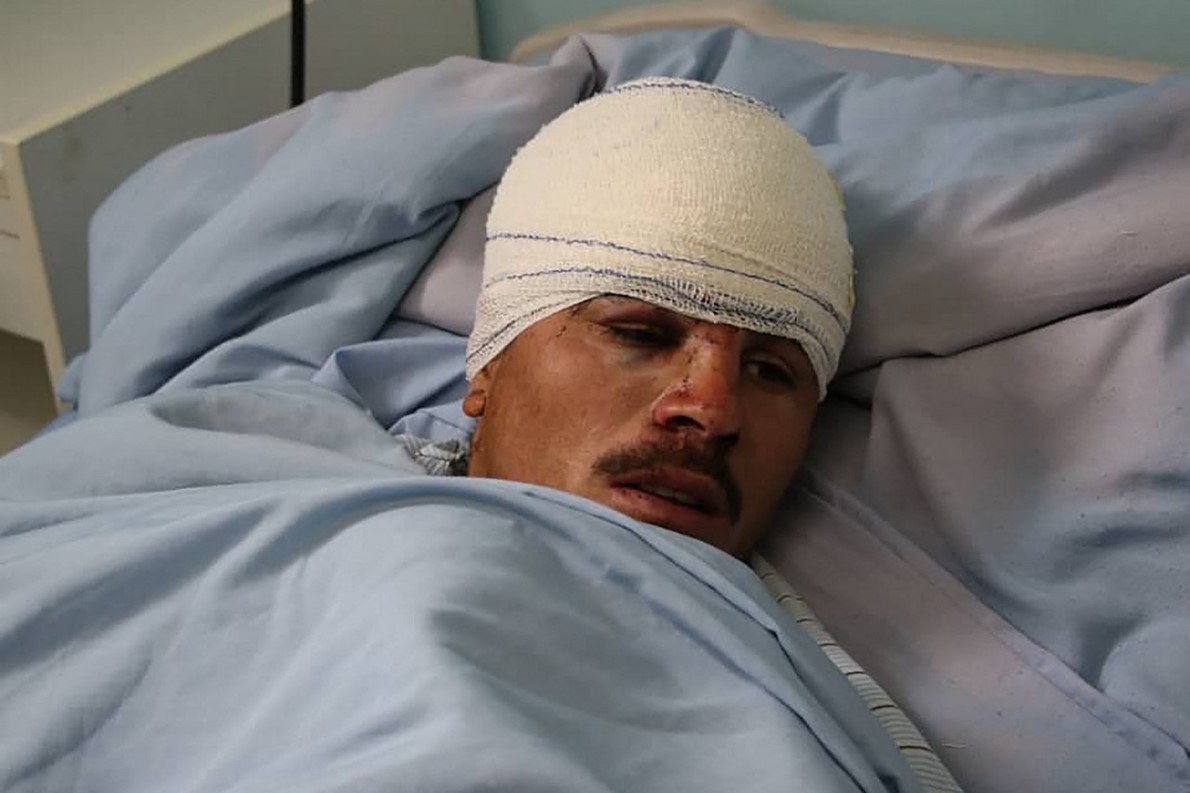SHARAN, Afghanistan — A powerful earthquake struck a remote border region of
Afghanistan overnight killing at least 1,000 people and injuring hundreds more, officials
said Wednesday, with the toll expected to rise as desperate rescuers dig
through collapsed dwellings.
اضافة اعلان
The 5.9-magnitude
quake struck hardest in the rugged east, where people already lead hardscrabble
lives in a country in the grip of a humanitarian disaster made worse by the
Taliban takeover in August.
 An Afghan quake victim rests in bed at a hospital following an earthquake in Gayan district.
An Afghan quake victim rests in bed at a hospital following an earthquake in Gayan district.
“People are digging
grave after grave,” said Mohammad Amin Huzaifa, head of the
Information and Culture Department in hard-hit Paktika, adding that at least 1,000 people had
died in that province alone.
He said at least
1,500 people were injured, some critically.
“People are still
trapped under the rubble,” he told journalists.
The death toll
climbed steadily all day as news of casualties filtered in from hard-to-reach
areas in the mountains, and the country’s supreme leader,
Hibatullah Akhundzada, warned it would likely rise further.
The earthquake
struck areas that were already suffering the effects of heavy rain, causing
rockfalls and mudslides that hampered rescue efforts.
“It was a horrible
situation,” said Arup Khan, 22, recovering at a hospital in the Paktika
provincial capital of Sharan.
“There were cries
everywhere. The children and my family were under the mud.”
He told AFP that
rescuers pulled him out of the wreckage of a guesthouse, but two relatives were
killed at his nearby home.
Photographs and
video clips posted on social media showed scores of badly damaged houses in
remote rural areas.
Footage released by
the Taliban showed local residents digging a long slit trench to bury the dead,
who by Islamic tradition should be laid to rest facing Mecca.
Offers of help
Even before the Taliban takeover,
Afghanistan’s emergency response teams
were stretched to deal with the natural disasters that frequently strike the
country.
But with only a
handful of airworthy planes and helicopters left since the hardline Islamists
returned to power, any immediate response to the latest catastrophe is further
limited.
“The government is
working within its capabilities,” tweeted Anas Haqqani, a senior Taliban
official.
“We hope that the
international community & aid agencies will also help our people in this
dire situation.”
The
UN and EU were
quick to offer assistance.
“Inter-agency
assessment teams have already been deployed to a number of affected areas,” the
UN Office for the Coordination of Humanitarian Affairs in Afghanistan tweeted.
Tomas Niklasson, EU special envoy for Afghanistan,
tweeted: “The EU is monitoring the situation and stands ready to coordinate and
provide EU emergency assistance to people and communities affected.”
Afghanistan is
frequently hit by earthquakes — especially in the Hindu Kush mountain range,
which lies near the junction of the Eurasian and Indian tectonic plates.
Scores of people
were killed and injured in January when two quakes struck rural areas in the
western province of Badghis, damaging hundreds of buildings.
In 2015, more than
380 people were killed in Pakistan and Afghanistan when a 7.5-magnitude
earthquake ripped across the two countries, with the bulk of the deaths in
Pakistan.
Afghanistan’s
deadliest recent earthquake killed 5,000 in May 1998 in the northeastern
provinces of Takhar and Badakhshan.
From the
Vatican City, Pope Francis offered prayers for the victims of the latest quake.
“I express my
closeness with the injured and those who were affected,” the 85-year-old
pontiff said at the end of his weekly audience.
Aid agencies and
the UN say Afghanistan needs billions of dollars this year to tackle its
ongoing humanitarian crisis.
The agencies have
particularly stressed the need for greater disaster preparedness in
Afghanistan.
The quake occurred
at around 1:30am at a depth of 10km, according to the United States Geological
Survey (USGS).
It was felt as far
away as Lahore in Pakistan, 480km from the epicenter, according to responses
posted on the USGS and European Mediterranean Seismological Centre websites.
Read more Region and World
Jordan News



